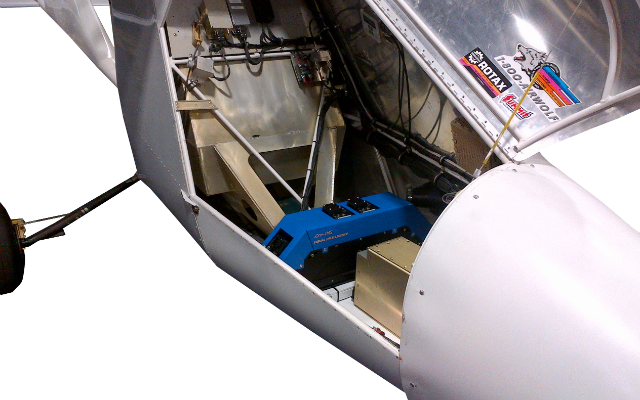Sensor developer Visual Intelligence is in the process of developing an array-based high resolution multi-spectral geospatial imager that it aims to eventually integrate onto tiny unmanned air vehicles.
In a move away from monolithic sensor systems for small UAVs, the company has developed a primarily software-based capability that can integrate several sensor types into a small package, and the technology will even be small enough to be integrated into a mobile phone.
“When we started we realised that all the sensors being built were monolithic,” Armando Guevara, president, chief executive and founder of Visual Intelligence, says. “We determined that we wouldn’t build another camera like that.
“We’re in the process right now of building a very, very small sensor to the level that is going to be hosted in a mobile phone.”
There are three levels of UAVs that the company is targeting: ones that carry a payload of less than 1kg; ones that can carry between 1-5kg; and then everything above.
Visual Intelligence is looking to team with UAV manufacturers that would be interested in this technology, and so far Neany has teamed with it to carry out experiments using one of the sensors on its Arrow UAV.

Visual Intelligence
“Now the sensor foundation that we’re building is for the class one, 500g - 1kg type device,” Guevara explained. “Once we have that we can then escalate into the larger UAVs.”
It hopes to have a demonstrator, which it is currently building, ready in 2015.
“A company can start with a small platform, but as they grow and do more things and want more capabilities, they will be able to use exactly the same platform…Our intent is to make it that small, because then by escalating or adding array, we can make a larger system using the same technology.”
Visual Intelligence believes in the market potential of UAVs and says the industry will proliferate once regulations allow for more regular use in commercial applications.
Guevara says that while he thinks the next generation of surveillance will be carried out using UAVs, "right now UAVs are like Windows ’95” in their sophistication.
“They can’t do much – once they are launched, they have to do as much as possible in a short period of time. ... This is not fulfilling the promise and potential.
“Our intent is to make this technology economical and easy to use. Our technology will be ubiquitous across the board. It is a software platform with some key hardware components – the rest is off the shelf.”
Source: FlightGlobal.com


























